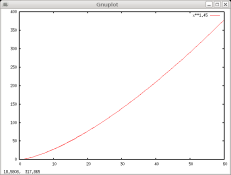The Ilford formula is a generic one for B&W film used by both Kodak and Ilford since at least the late 60's, and has not changed over time with changes in the film. Most critical users report significant differences between that formula and the behavior of modern films.
Attached are two .pdf files. One is a table of adjustment times with adjustment advice calculated from three sources:
Ilford's chart.
Leon Taylor's tests at:
http://www.filmwasters.com/forum/in...nshdlonn4lv73tj1&topic=4467.msg49755#msg49755
Robert Reeves' Schwarzschild exponent testing:
Robert Reeves, Wide-Field Astrophotography, Willmann-Bell, ISBN-13: 978-0943396644
Taylor's and Reeves' empirical tests differ significantly from the generic Ilford curve suggestions, but only about a stop or so from each other. You'll see that deviation in the attached graph. I have friends using the Reeves numbers with FP4+, including Shawn Dougherty here on APUG who report excellent results.
The metered times in the first column are all in seconds. The adjusted times for Ilford, Taylor, and Reeves are shown in HH:MM:SS (hours:minutes:seconds) format for ease of timing in the field. The formula used to regress the Taylor and Reeves test data is at the top and the coefficients a and exponents b for that formula are also listed. This is the same formula as Patrick Gainer used, but for calculating a chart to be used in the field I prefer to use a variable exponent rather than the fixed exponent of 1.62 that Gainer found to work well for all the films in the test data he used. I find that varying the exponent more accurately models a wider variety of films, especially those with low reciprocity like Acros.
You can find a lot of discussion of Gainer's formula here on APUG by searching for reciprocity misbehavior.
The last time I posted on reciprocity failure someone said that the books on astrophotography and Gainers' derivations that I referenced were not based on empirical data. Reeves and Covington both tested reciprocity failure with documented standard procedures, and Gainer used empirical data from a carefully done study of five films by Howard Bond. So you may get advice that this post is a complete waste. I'm not interested in arguing online, so you can use this info as you see fit,or ignore it.
Lee




